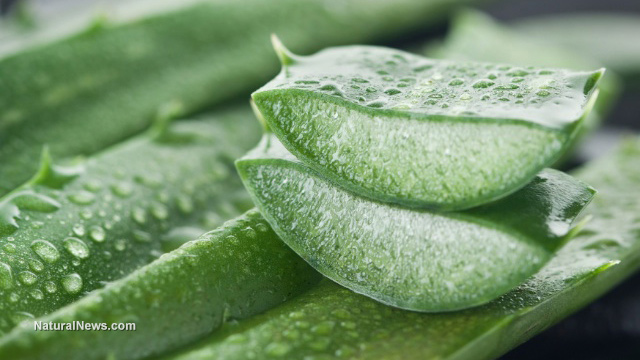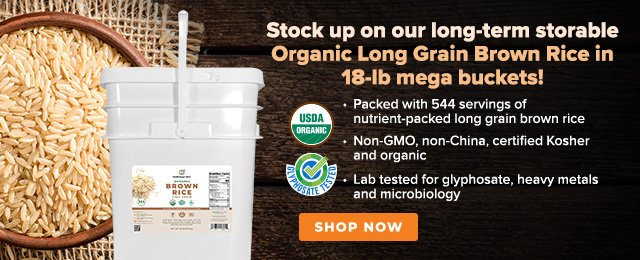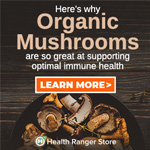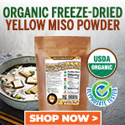This is why ancient Egyptians referred to Aloe Vera as the 'plant of immortality'
Tuesday, June 07, 2016 by: David Gutierrez, staff writer
Tags: Aloe vera, natural medicine, superfood

(NaturalNews) In ancient Egypt, Aloe vera was known as the "plant of immortality," and it's easy to see why. In addition to its well known use as a first aid ointment for minor burns, cuts and scrapes, aloe is also useful for a variety of other medicinal and nutritive uses, both external and internal.
Aloe vera is native to Africa and parts of the Middle East, and has a history as a herbal remedy in those regions stretching back thousands of years. In the 18th and 19th century, it was one of the most commonly prescribed remedies even by Western doctors. It remains one of the most popular and widely used remedies to this day.
Healing and hydrating
The gel derived from aloe vera leaves is a remarkable healing substance. It is approximately 95 percent water, and the other 5 percent has high levels of anti-inflammatory, antioxidant and antimicrobial enzymes. This accounts for much of its usefulness in treating minor skin injuries, including burns; that extends to sunburns, as well. In fact, aloe's ability to hydrate and seal the skin makes it a particularly effective sunburn remedy.Aloe's healing and hydrating qualities also make it a great substitute for shaving creams or gels – it both nourishes the skin and helps heal it from tiny cuts or abrasions caused by shaving. For this use, aloe can also be mixed with almond or eucalyptus oil.
Aloe's external uses aren't limited to first aid. It can also be used as a makeup remover – just a small dollop of gel can be placed on a cotton ball and used to cleanse the skin. Aloe-soaked cotton balls can also be refrigerated and then used as compresses for puffy eyes.
The plant's healing and antimicrobial characteristics also work on the inside of your mouth, healing mouth ulcers (canker sores), removing plaque and eliminating or preventing bad breath.
Internal use even more potent
But unlike many herbal remedies, aloe vera gel can also be used as a superfood. It contains a variety of minerals – including calcium, chromium, copper, iron, magnesium, manganese, potassium, selenium and zinc – that provide essential nutrients and help boost metabolic function. In contains 20 of the 22 essential amino acids, and the vitamins A, C, E, choline, folic acid, B1, B2, B3 and B6. It even contains B12, a vitamin that typically is only found in animal foods (and that therefore can be hard for people on vegan diets to get enough of). Aloe also seems to contain compounds that boost the body's absorption and use of vitamin B12.In fact, aloe vera gel contains more than 200 biologically active constituents, including vitamins, minerals, amino acids, polysaccharides and enzymes. The enzymes include amylase and lipase, which help digest sugar and fat, and bradykinase, an anti-inflammatory. Aloe vera also contains salicylic acid, the active ingredient that makes willow bark a painkiller, anti-inflammatory and antimicrobial (and from which aspirin is derived).
Taken internally, aloe can help fight infection, boost the immune system, aid digestion, remove toxic material from the digestive organs, and relieve inflammation in the joints and gut.
Aloe vera gel can be purchased at most health food stores. You can also make it yourself from the fresh leaves of the plant, which is sold in many grocery stores and can be grown potted or in a garden. Simply juice either the whole leaves or the inner filet of the leaves. For external first aid, the leaves can also simply be sliced open and laid on the cut, scrape or burn to be treated.
As aloe vera gel has a slightly bitter taste, some people prefer to mix it into smoothies or other beverages.
Sources for this article include:
CSGlobe.com
CSGlobe.com
Science.NaturalNews.com
Aloe vera at FETCH.news
Get independent news alerts on natural cures, food lab tests, cannabis medicine, science, robotics, drones, privacy and more.
Take Action: Support Natural News by linking to this article from your website
Permalink to this article:
Embed article link: (copy HTML code below):
Reprinting this article:
Non-commercial use OK, cite NaturalNews.com with clickable link.
Follow Natural News on Facebook, Twitter, Google Plus, and Pinterest
- Newly released JFK files reveal Pentagon's role in creating Lyme disease and covid in the same lab
- Woman contracts WORLD'S DEADLIEST VIRUS after unknowingly being given the WRONG VACCINE
- Kiss Your Genetic Privacy Good-Bye! 23andMe Gets Green Light to Sell Your Intimate Genetic Details to Anyone They Want
- AI weather model outperforms traditional forecasts, boosts accuracy by 20%
- Revolutionize your diet with pomegranate: The miracle juice for gut health and metabolism
- Advisory: Ex-FBI agent exposes likely ATF honeypot operation selling illegal Glock switches
- The case for locking up the Deep State's biggest hatchet man...
- Analysis: The coming economic collapse, a mass uprising and Trump's three secret weapons to halt the growing revolt
- Sweden's migrant crisis deepens as failed green energy venture leaves thousands jobless, exposes systemic collapse
- At least 75 percent of Americans are unknowingly MEDICATED FOR STUPIDITY by fluoridated water – Utah now banning it
- Trump administration CUTS FUNDING to Gavi, the Vaccine Alliance - a major blow to the Bill Gates-backed entity
- Health Ranger Report: Ashton Forbes discusses TELEPORTATION ORBS and their role in MH370 disappearance
- U.K. unveils controversial pandemic preparedness tool: A double-edged sword?
- DHS Secretary Kristi Noem plans to dismantle FEMA
- Pediatric dentist exposes fluoride dangers as more states ban toxic water additive
- We are closer to all-out war in Europe, in Asia, and in the Middle East than most people realize
- EPA banned chemical linked to cancer, Parkinson's and fatal heart defects in babies - now industry is lobbying to get it reinstated
- Can special diets and supplements help kids with autism? A new research offers hope and hints at what works
- Newly released JFK files reveal Pentagon's role in creating Lyme disease and covid in the same lab
- Analysis: The coming economic collapse, a mass uprising and Trump's three secret weapons to halt the growing revolt
- Trump nominates VACCINE ZEALOT Susan Monarez to lead the CDC, sidelining RFK Jr.'s reform efforts
- Trump's greatest betrayal so far: Accelerating Middle East wars, silencing dissent, and serving Zionist masters
- CDC finally halts $11 billion COVID funding scam as health officials admit the ‘pandemic’ was a fraud
- The hidden dangers in your kitchen: How cooking methods impact diabetes, cancer and aging
- BEWARE: USDA allows genetically engineered vaccines to infiltrate organic food production
- Obama accused of laundering USAID funds to fuel global protest movements, regime change operations
- DEADLY DECEPTION: How COVID vaccines increased mortality rates and why authorities hid the truth
- Here are TEN all-natural ways to protect your garden without using harmful chemicals
- Dr. Mike Yeadon releases 15-minute testimony - WATCH - about genocidal intent of COVID “vaccines”
- Festive flavors: The sweet history, nutritional profile and health benefits of pecan pie
- Big Pharma's media takeover: How drug companies bought the news - and your health
- Dr. Suzanne Humphries makes bombshell appearance on Joe Rogan podcast, exposing vaccine industry deception back to POLIOMYELITIS
- Elon Musk: Aliens could be here on Earth RIGHT NOW
- 5 Simple steps to boost your brainpower: How to strengthen executive function in a distracted world
- Trump reverses course on Gaza plan, says “nobody is expelling Palestinians”
- California's social media censorship law struck down: A victory for free speech or a threat to online safety?
- Newly released JFK files reveal Pentagon's role in creating Lyme disease and covid in the same lab
- EPA advisor admits the agency is funneling billions to climate groups ahead of Trump’s return to White House
- California's social media censorship law struck down: A victory for free speech or a threat to online safety?
- Dr. Mike Yeadon releases 15-minute testimony - WATCH - about genocidal intent of COVID “vaccines”
- The Health Ranger releases “Vaccine Zombie” song and music video, using AI-animated zombies for the music video
- Florida takes a stand: DeSantis proposes permanent ban on mRNA vaccine mandates
- The pandemic as a tool for INDOCTRINATION: Understanding “The Indoctrinated Brain” by Dr. Michael Nehls
- “Why we influenced the 2020 elections”: Facebook files reveal the coordinated effort to bury the Hunter Biden laptop story
- Mike Adams releases country western hit single: Goin’ Back in Time is Comin’ Home
- Mike Adams releases music poetry sensation: A Child of God
- Unpacking the Lies That We’ve Been Fed – new song and music video released by Mike Adams, the Health Ranger
- Michigan sheriff announces criminal investigation into 2020 election crimes, Dominion Voting Systems
- Migrants are taking advantage of recent hurricanes to scam residents and loot their homes
- House Intelligence Committee calls for the ARREST and PROSECUTION of Dr. Anthony Fauci
- Rep. Nancy Mace introduces bill to ban biological males from female facilities on federal property
- Peter Rost exposes Big Pharma corruption in his book “The Whistleblower: Confessions of a Healthcare Hitman”
- Former horse rancher and 6,000 other plaintiffs are suing Syngenta after paraquat exposure led to Parkinson's Disease
- Mike Adams releases new song and music video: Nothing More Disgusting Than a Globalist
- Red Cross issues warning to stop blood plasma donations from vaccinated people
- Scientists confirm: GENIUS brain function can be spontaneously unleashed in humans without any apparent cause
- EPA advisor admits the agency is funneling billions to climate groups ahead of Trump’s return to White House
- HYSSOP: What research reveals about the health benefits of this ancient holy herb
- Two containers with completed ballots fall out of truck in Florida
- Fully vaccinated about to see “tsunami” of illness and death, warns virologist
- Global leaders unite to clamp down on “misinformation” with UN-backed Cascais Declaration
- BREAKING: 2025 NDAA authorizes mandatory military draft of WOMEN across America… as Pentagon pursues global NUCLEAR war with both Russia and China at the same time
- Michael Yon warns of a ZIONIST TAKEOVER in Trump’s second administration
- BOMBSHELL: DNA testing kits are a SCAM to develop ethnic-specific bioweapons
- Ozempic and Wegovy weight loss drugs are injectable LIZARD VENOM PEPTIDES that may unleash a devastating wave of organ failure… side effects align with symptoms of SNAKE BITES
- Israeli soldiers accused of even more torture and abuse in the West Bank
- These 13 countries just signed an agreement to engineer a global FAMINE by destroying food supply
- NASA admits that climate change occurs because of changes in Earth’s solar orbit, and NOT because of SUVs and fossil fuels
- RFK Jr. clears key hurdle: Sen. Susan Collins backs controversial HHS nominee, signaling a new era for health policy
- Sermon 30: How Jesus reveals Caesar’s FAKE CURRENCY and FALSE AUTHORITY
- Coriander seeds: Ancient medicine backed by modern science
- Arizona officials claim Maricopa County needs 10-13 days to tabulate results of the election
Science News & Studies
Medicine News and Information
Food News & Studies
Health News & Studies
Herbs News & Information
Pollution News & Studies
Cancer News & Studies
Climate News & Studies
Survival News & Information
Gear News & Information
News covering technology, stocks, hackers, and more



"Big Tech and mainstream media are constantly trying to silence the independent voices that dare to bring you the truth about toxic food ingredients, dangerous medications and the failed, fraudulent science of the profit-driven medical establishment.
Email is one of the best ways to make sure you stay informed, without the censorship of the tech giants (Google, Apple, Facebook, Twitter, YouTube, etc.). Stay informed and you'll even likely learn information that may help save your own life."
–The Health Ranger, Mike Adams












































